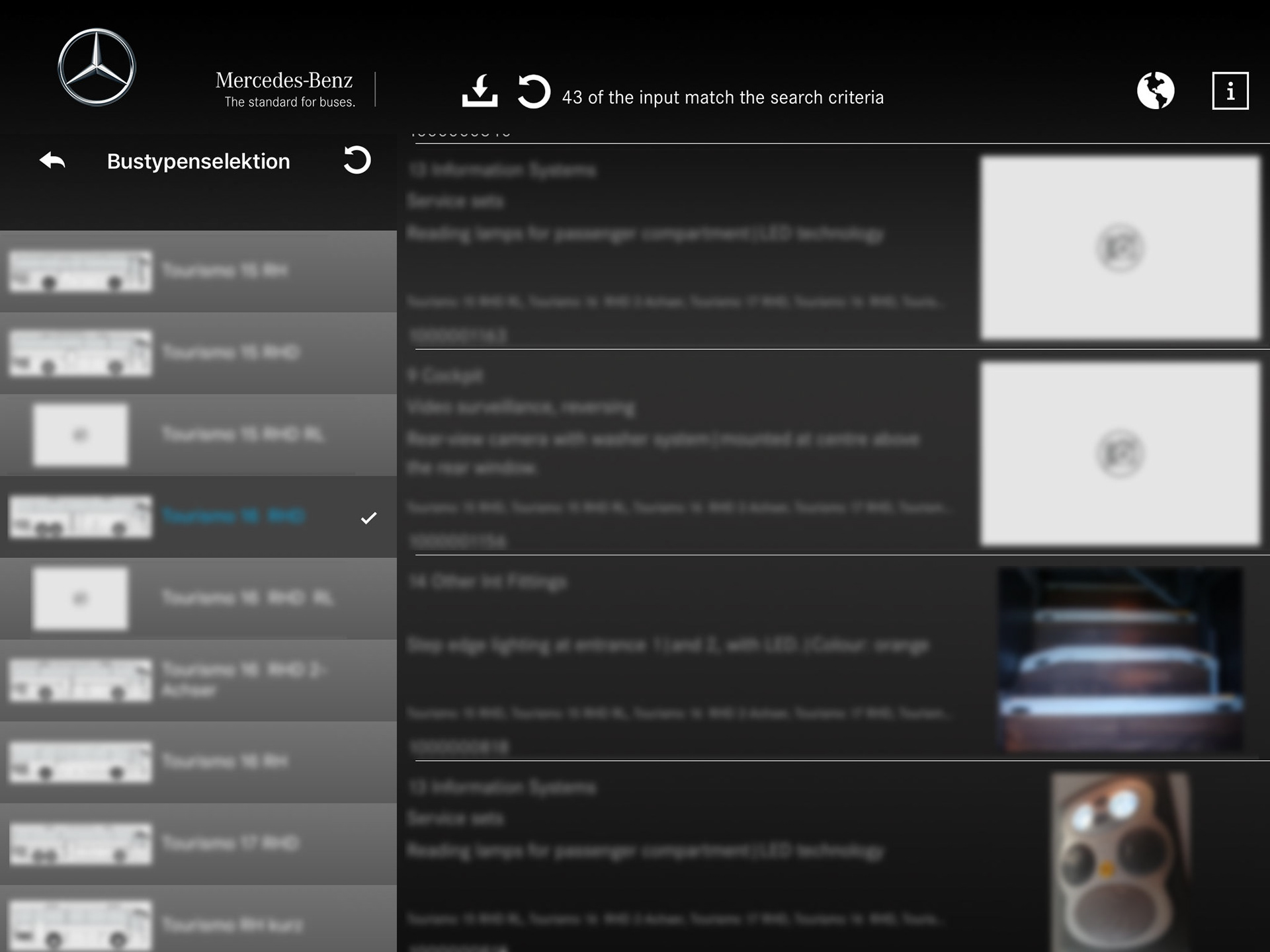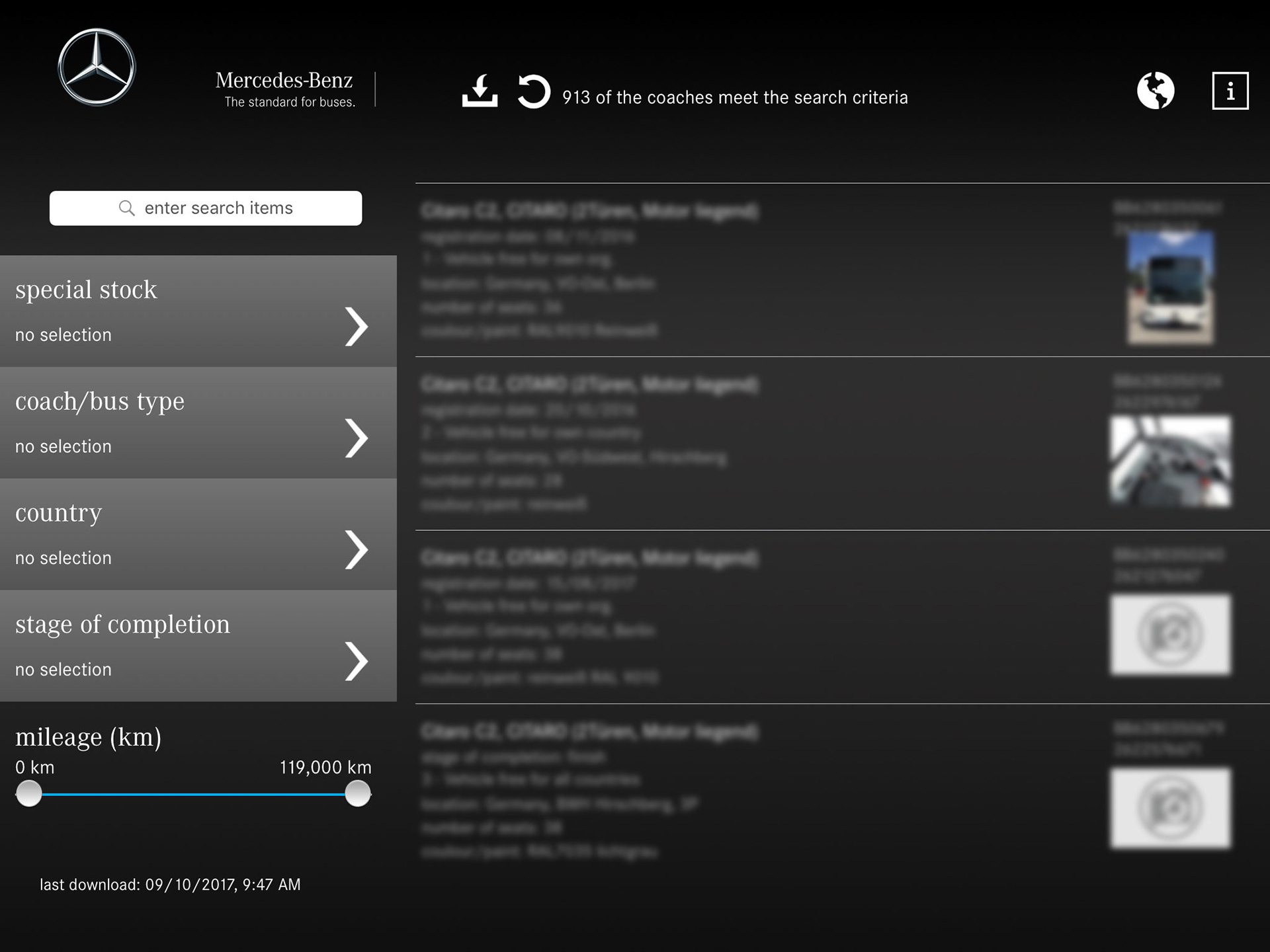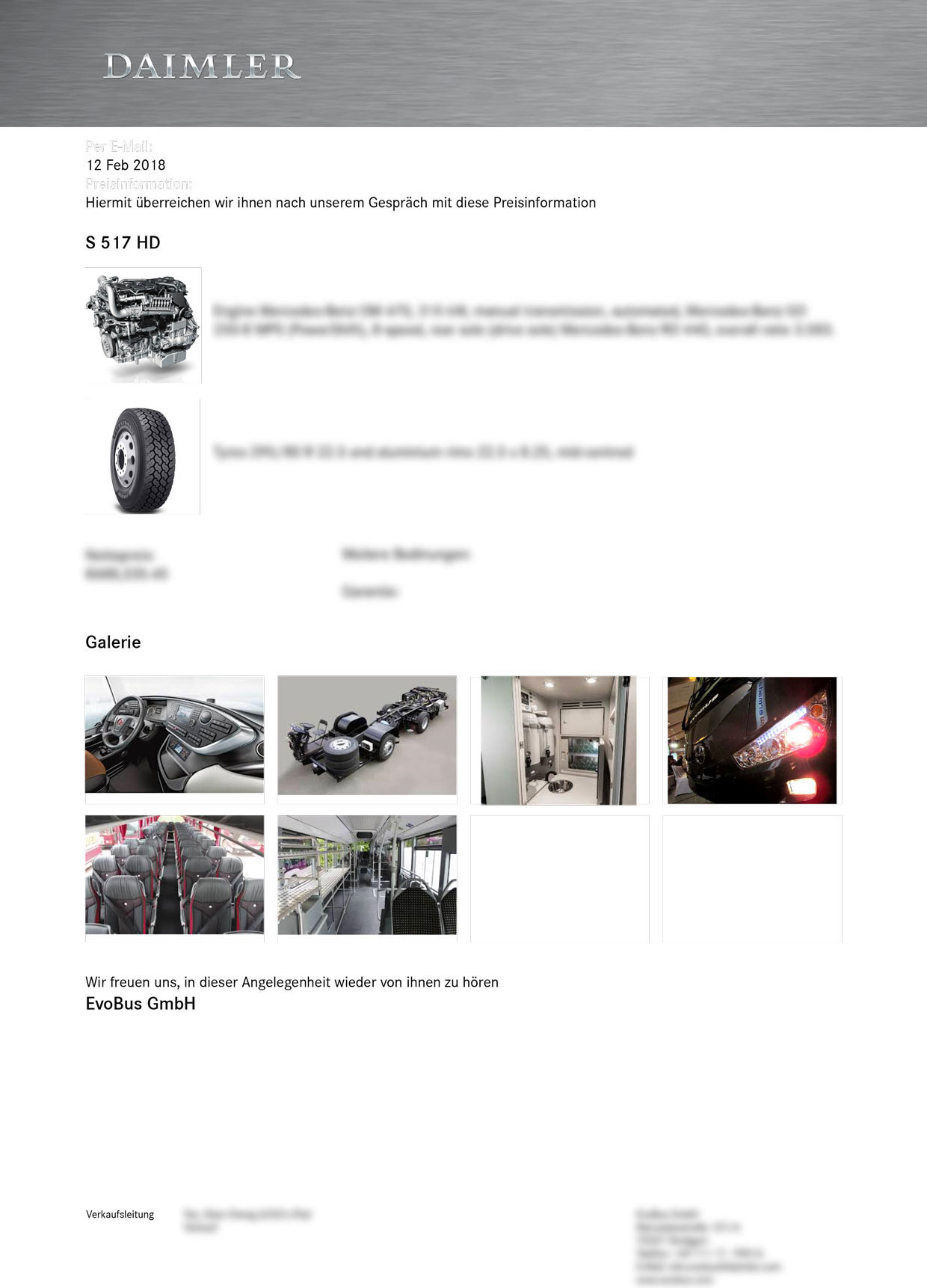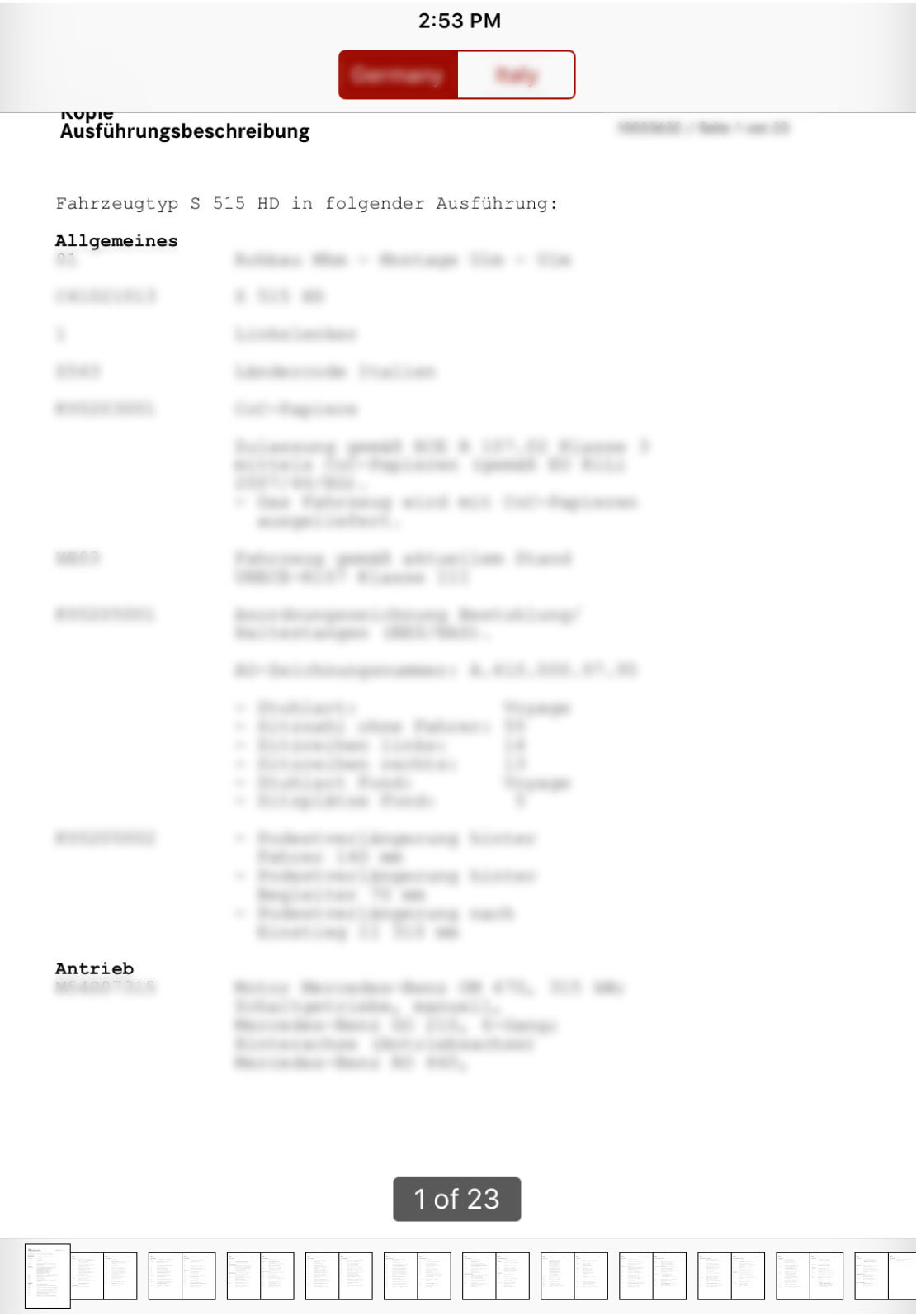Background
Prior to the project, Mercedes and Evobus sales representatives were burdened with managing sales journeys across four separate apps for the iPad. These apps handled various aspects of the sales process, from customizing new buses to creating invoices. The disjointed experience was not only frustrating but also costly, as Mercedes had to maintain licensing and upkeep for each app.




Above: The four Mercedes and Setra bus applications featured distinct layouts and user journeys, creating challenges for users when transitioning between them during their sales process
Objectives
The primary goal of the project was to consolidate the four separate apps into a single, unified application. This required extensive research into the day-to-day workflows and needs of both customers and sales representatives. The aim was to streamline the sales process and provide a more efficient and user-friendly solution.
Above: An example of a flowchart for the Setra MVA app to help the team understand where everything was supposed to go
Feedback and Iterations
The project began with in-depth interviews and discussions with customers and sales representatives to understand their pain points and requirements. Analysis of the existing apps identified common functionalities and areas for improvement. Lo-fi wireframes were created using Sketch and presented to selected sales representatives for initial testing. Feedback from these tests informed iterations and refinements to the UX, including the addition of requested features such as improved search filters.
Above: Lo-fi wireframe were developed in Sketch from existing app after interviewing the stakeholders and some sales team representatives. We decided to keep the familiar app structure but make the data more consistent


Above: The new quotation template (with images and brand letterhead) developed by the team vs old PDF template (with no images and letterhead)
What Went Right
Iterative design and testing, along with close collaboration with the development team, ensured that the final solution closely aligned with user needs and expectations. Continuous feedback loops with stakeholders and end-users helped to validate design decisions and ensure a successful outcome. With a month to spare, the project team conducted additional internal testing to fine-tune the app before launch.
Above: The Mercedes OneApp hi-fi design with revised layout and a section showing how the animation should work for the enterprise app with placeholder content




Above: Additional screens with placeholder images and text from the hi-fi design
Outcomes and Metrics
Following the launch of the revamped app, feedback from sales representatives was overwhelmingly positive. The consolidated app eliminated the need to juggle between multiple applications, resulting in improved efficiency and productivity. Furthermore, the reduction in app count from four to one significantly reduced upkeep and maintenance costs for Evobus. The success of the project was recognized with a highest commendation letter from Mercedes Evobus GmbH and Setra Busses.
Above: Fleet of Mercedes Evobus and Setra Busses. Image was used as the splash screen for the project
Conclusion
The Mercedes OneApp Revamp project successfully addressed the challenges faced by sales representatives, streamlining the sales process and reducing complexity. By consolidating multiple apps into a single, user-friendly solution, the project not only improved efficiency but also resulted in cost savings for Mercedes. The project's success can be attributed to a user-centered approach, iterative design, and close collaboration between stakeholders and the development team.